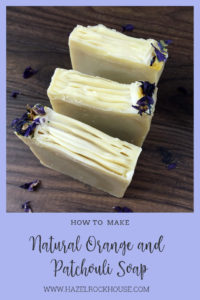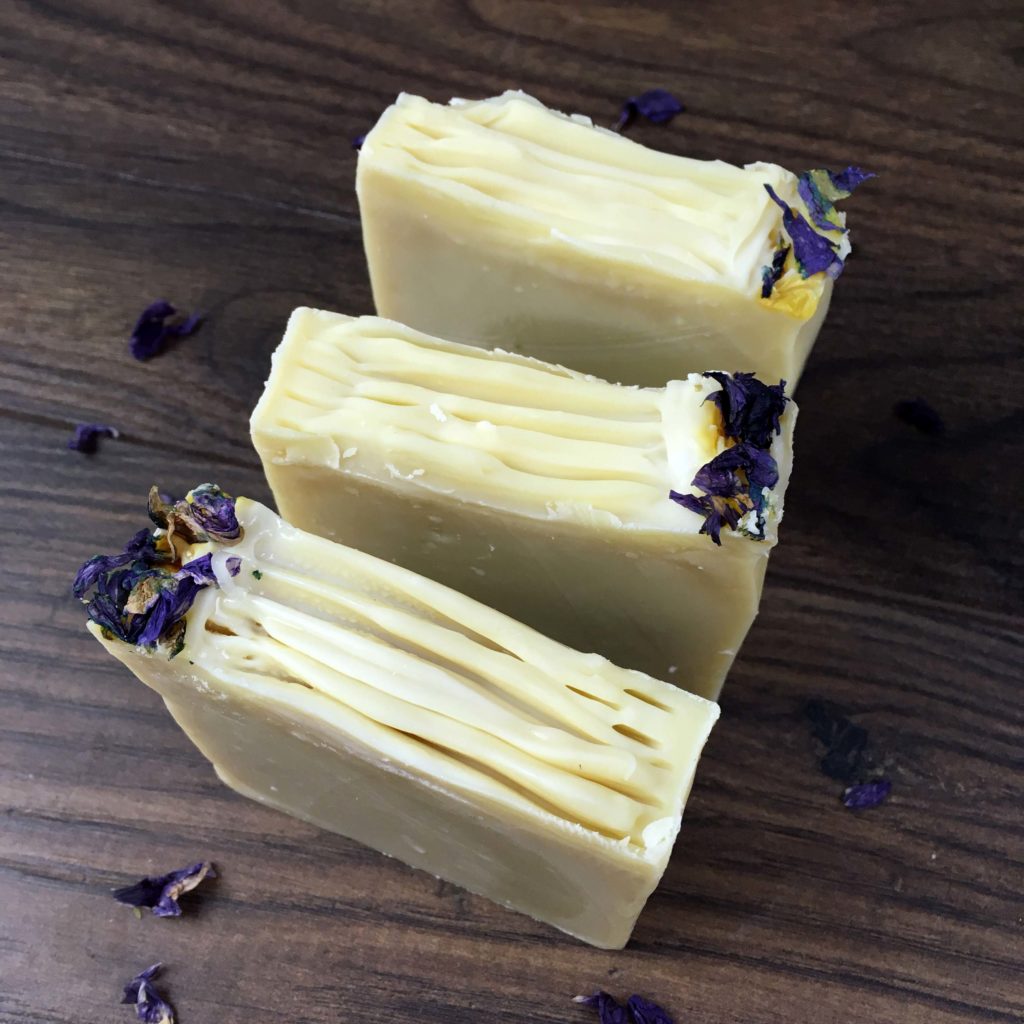What does the term natural mean to you? Each person thinks about this word differently as there isn’t really a specific agreement for what it entails. Most people say that it means no chemicals. Some say it is only ingredients found in nature.
In the soap making community, natural tends to mean making soap with essential oils and natural colourants rather than fragrance oils and pigments, micas or dyes. So I thought I’d do a series of posts about natural soap making.
First up is a very simple one. A palm free recipe with Orange and Patchouli essential oils. I’m not going to add any colour to this soap because Orange and Patchouli essential oils are already highly coloured. Orange is, of course, orange and Patchouli is dark brown, If we tried to add more colour. It would probably result in a muddy mess.
I’m going to use the same recipe for each of the natural soaps in the series and I’ll give this below.
Note that the recipes have been calculated differently for the metric and imperial versions so please don’t chop and change between them. Use one or the other.
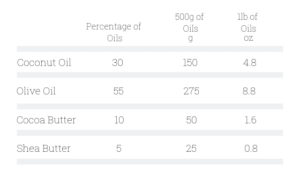
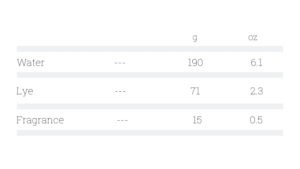
If you’d like to read detailed instructions on how to make soap you can get my Cold Process Soapmaking Guide here
Here’s the video
Weigh out the lye. Weigh out the water and add the lye to it. Stir until the lye is completely melted. Let cool to 30 degrees Celcius or below.
Weigh out the hard oils and melt them. Measure the olive oil out and add to the hard oils. Leave to cool.
Prepare your mould and weigh out your essential oils.
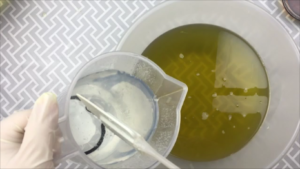
Add the lye solution to the oils and blend with a stick blender.
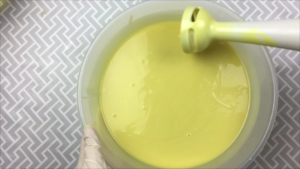
Stop when you see it start to thicken.
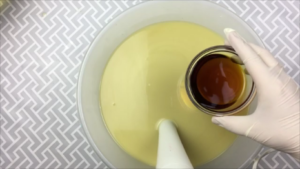
Add the fragrance to the soap mix and blend in.
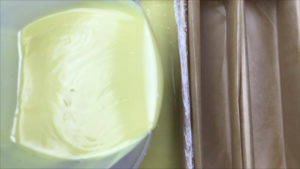
Pour the soap into the mould.
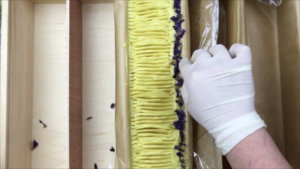 Decorate as you see fit.
Decorate as you see fit.
In the video, I have used blue mallow flowers to contrast with the yellow of the soap. You can texture the top of the soap like I have or you can just leave it plain.
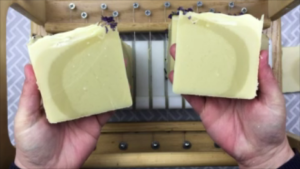
The fantastic thing about these natural soaps is that they are simple and easy to make for beginners. Not too complicated, simple ingredients and not too many steps to remember.
You can see in the video that my soap has a partial gel. If you are not familiar with this, I’ll explain. When the saponification (soap making) chemical reaction occurs, it gives out heat. We can either do one of two things as soap makers, keep the heat in or let it out.
If we keep it in by wrapping our soap up in blankets (or by other methods), the soap will gel. It will heat up to such a temperature that the soap goes dark and gel-like. The soap has melted. This is totally normal and good in a number of ways. The colour of the soap will be more intense and the soap will be easier to take out of the mould the next day as it has hardened more quickly.
If we let the heat out or soap at a lower temperature, it will not gel. This is great for people who are soaping with heat sensitive ingredients like honey or milk. They do not want the soap to heat up fast. The soap will be very soft the next day and the colours will be more pastel compared to gelled soap.
Either way fine and really it depends on your ingredients and personal preference.
So what happened to my soap?
Well, I had a partial gel. I wanted the soap to gel and I had wrapped it up to insulate it. However, it is very cold here at the moment and I don’t heat my workshop overnight so my soap cooled down too much before the edges heated up to gelling temperatures. Some of my soap is gelled and some are not, So you can see different degrees of colour in the same bar. The darker areas have heated up to a much higher temperature than the lighter areas of the bar.
Partial gel is not a problem for the soap. It will still work well and feel amazing. It is purely a cosmetic issue. I don’t love the look of this soap as I was hoping for a nice uniform yellow but it’s not a disaster. And it just goes to show that this could happen to anyone, even a seasoned soaper!
Next up is another partially gelled soap…Lemongrass and Poppy Seed. See you next time.
You can get my Guide to Making your own Cold Process Soap here. You can also sign up to become a Housemate if you want all the latest happenings, freebies and discounts at Hazelrock House.
